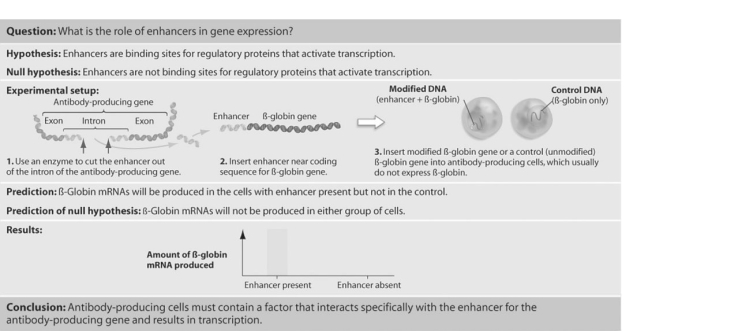 Figure 19.1
Figure 19.1
-In the experiment shown in the figure above, Tonegawa and his colleagues were able to express fi- globin in an antibody- producing cell that normally does not express fi- globin. They achieved this result by splicing an enhancer from an antibody- producing gene into the protein- coding portion of the fi- globin gene. They then introduced this recombinant gene into cultured antibody- producing cells. Why was the choice of
Antibody- producing cells-rather than, say, muscle or skin cells-critical for the success of this experiment?
A) Only the antibody- producing cells have the correct regulatory transcription factors to bind to the enhancer.
B) Only the antibody- producing cells are capable of expressing recombinant genes.
C) Only the antibody- producing cells have the correct set of enhancers, promoter- proximal elements, and promoters.
D) Only the antibody- producing cells have the correct set of enhancers.
E) Only the antibody- producing cells have the correct set of promoter- proximal elements.
Correct Answer:
Verified
Q13: The TATA- binding protein TBP) binds to
A)
Q14: Twenty- five years ago, when Oshima and
Q15: The reason for differences in the sets
Q16: Histone acetyl transferases exert their effect on
Q17: The association of DNA with nucleosomes means
Q19: Ovalbumin, the major protein of egg white,
Q20: Imagine that you are studying the control
Q21: In the roundworm C. elegans, the lin-
Q22: Alternative splicing takes place in the
A) nucleus.
B)
Q23: Not long ago, it was believed that
Unlock this Answer For Free Now!
View this answer and more for free by performing one of the following actions

Scan the QR code to install the App and get 2 free unlocks

Unlock quizzes for free by uploading documents